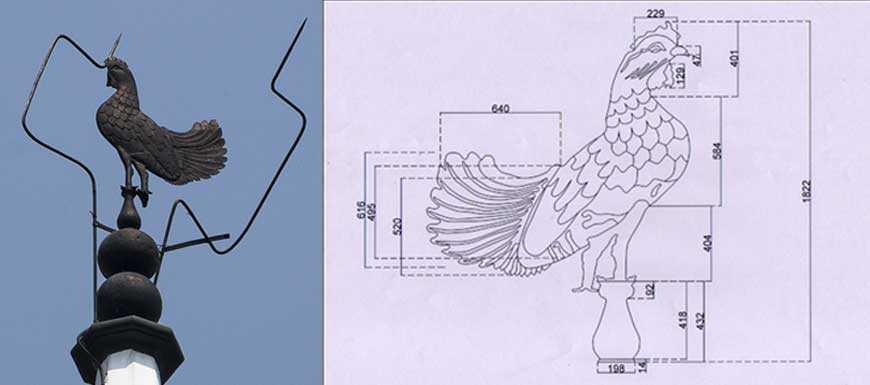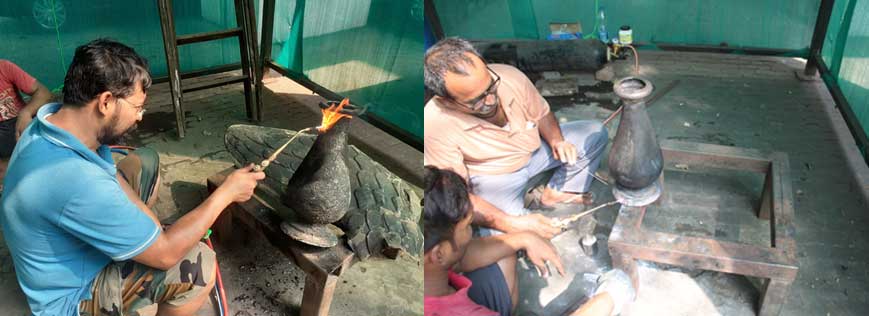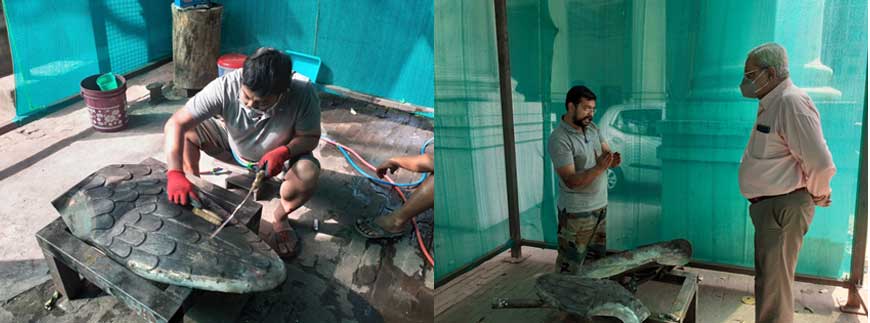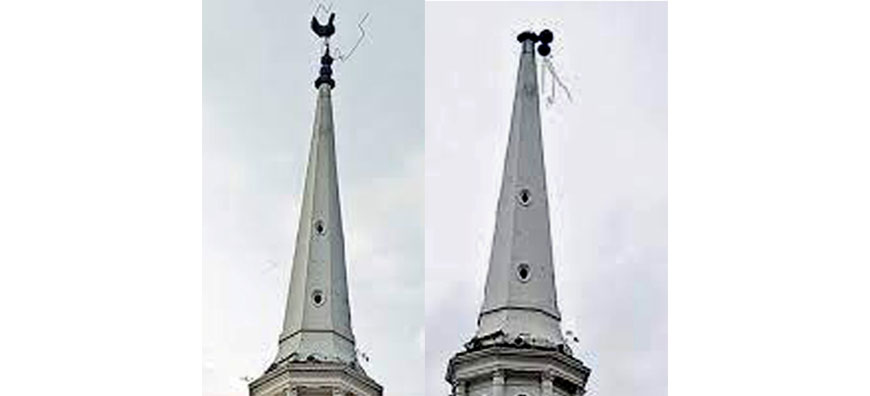Struck by Amphan, a 200-year-old church weathervane gets expert help

Even if you don’t know it by name, the nearly 100-foot tall, graceful white tower is instantly recognisable to any Kolkatan as a BBD Bag landmark, next to Writers’ Building, and looking straight down Old Court House Street. Visible from a long distance even today, despite the heavy traffic and other tall buildings around it, the structure once locally known as ‘Laat sahib ka girja’ (the governor general’s church) is actually St Andrew’s Church, the only church belonging to the Scottish Presbyterian denomination in Kolkata.
The reason we are talking about St Andrew’s is the damage caused to it by Cyclone Amphan, which tore through parts of the state in May last year, wreaking havoc as it went. Like many other heritage structures, St Andrew’s, too, was affected as fierce winds dislodged its famous black copper alloy weathercock (a weather vane shaped like a rooster) on top of its tower, bringing parts of it crashing down to the ground. Thanks to an initiative by the Kolkata chapter of the Indian National Trust for Art and Cultural Heritage (INTACH), the 200-year-old weathercock is now on its way to restoration.

“We collected the broken bits from the ground and a scaffolding is now being erected to get the remaining bits from the top of the tower,” says G.M. Kapur, convenor of the Kolkata chapter. “The whole thing is pretty heavy, though tis exact weight is hard to tell right now.”
Also read : The iconic Coffee House and its predecessors
The foundation for the church was laid by Lord Hastings (governor general of India from 1813-23) and his wife on November 30, 1815, hence the original local name for it. Constructed by Burn, Currie and Co., St Andrew’s came up at the site of the Old Court House, which had been demolished in 1792, though the name of the street on which it stood has stuck. The doors to the church were opened to the public on March 8, 1818.

An interesting story exists about the tower and its famed weathercock. Apparently, Bishop Middleton, the first Bishop of Calcutta, did not think St Andrew’s should have a spire (tower) taller than that of St. John’s Church, the Anglican (Church of England) cathedral of Kolkata. In typically rebellious Scottish fashion, Dr James Bryce, who had formed the Scottish congregation in 1815, not only ordered the building of the tower but also insisted on putting the weathercock on top, just to further annoy and mock the bishop.

Apparently, Middleton was so infuriated by this that the government later declared that while the entire structure would be maintained by the city’s public works department, the weathercock would be left untouched. One wonders what kind of maintenance support it received once the British left!
 Before(left) and after(right) the cyclone
Before(left) and after(right) the cyclone
“Our scaffolding is almost done, and we have begun work on restoring the parts that we collected,” says Kapur. The INTACH team is working under the guidance of senior conservator Subrata Boral. In the past, INTACH has been responsible for restoring several of Kolkata’s most prestigious heritage artefacts and structures, such as celebrated painter Johann Zoffany’s ‘The Last Supper’, which hangs in St John’s Church, the Gwalior Monument, and the Prinsep Memorial.
Happily, the black bird atop St Andrew’s Church will now be restored to its original glory too, and this monument to the Scottish heritage of Kolkata, will continue to grace a square originally named after yet another Scotsman, Lord Dalhousie.










